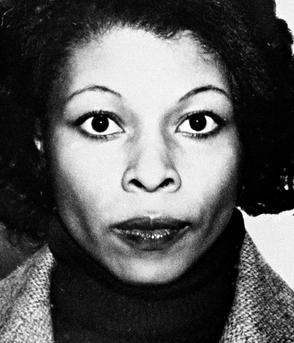
Former Black Panther Assata Shakur Dies in Cuban Exile After 50 Years as FBI’s Most Wanted (image credits: upload.wikimedia.org)
The image captures a moment frozen in time—a defiant face that became synonymous with revolutionary resistance and decades-long pursuit by federal authorities. Assata Shakur, the former Black Panther Party member who escaped from prison in 1979 and lived in Cuban exile for over four decades, has died at age 76, marking the end of one of America’s longest-running fugitive cases.
## The Revolutionary Who Refused to Be Silenced
Shakur’s death closes a chapter on one of the most polarizing figures in American criminal justice history. Born JoAnne Deborah Byron in 1947, she transformed into Assata Shakur—a name that would appear on FBI Most Wanted lists for nearly half a century. Her story isn’t just about a fugitive on the run; it’s about a woman who became a symbol of resistance against what she called systematic oppression.
The FBI had placed a $2 million bounty on her head, making her the first woman ever added to their Most Wanted Terrorists list. Yet in Cuba, she lived openly, writing poetry, giving interviews, and maintaining that her fight was always about justice, not violence.
## A Life Shaped by Turbulent Times
Shakur’s journey began in the racially charged atmosphere of 1960s America. She joined the Black Panther Party during its most militant phase, when the organization was providing free breakfast programs for children while simultaneously engaging in armed confrontations with police. The contrast defined her entire life—community activist by day, alleged cop killer by legal definition.
Her involvement with the Black Liberation Army led to numerous arrests and charges throughout the early 1970s. By 1973, these conflicts would culminate in the New Jersey Turnpike shootout that changed everything.
## The Shootout That Changed Everything
On May 2, 1973, a routine traffic stop spiraled into deadly violence. State Trooper Werner Foerster was killed, and Shakur was wounded and captured. The details remain disputed to this day—Shakur maintained she was shot with her hands raised, while prosecutors argued she was the aggressor.
The trial became a national spectacle. Shakur’s supporters viewed her as a political prisoner, while law enforcement saw her as a cold-blooded cop killer. In 1977, she was convicted of first-degree murder and sentenced to life in prison.
## The Great Escape and Cuban Sanctuary
Two years later, Shakur pulled off what many considered impossible—a daring prison break that involved accomplices posing as visitors. The escape was meticulously planned and flawlessly executed, leaving authorities stunned and beginning a manhunt that would span continents.
By 1984, she had surfaced in Cuba, where Fidel Castro’s government granted her political asylum. The decision infuriated American officials but aligned with Cuba’s long-standing policy of harboring individuals they considered victims of U.S. political persecution.
## Life in Exile: From Fugitive to Cultural Icon
In Cuba, Shakur didn’t simply hide—she thrived. She wrote her autobiography, “Assata: An Autobiography,” which became required reading in many African American studies programs. Her writings explored themes of:
– Systemic racism in American law enforcement
– The role of women in revolutionary movements
– The intersection of race, gender, and political activism
– Personal transformation through struggle and exile
She gave interviews, appeared at conferences, and became a grandmother. Yet she remained acutely aware that stepping outside Cuba could mean immediate arrest and extradition.
## The Controversy That Never Faded
Key Takeaways:
- Shakur remained on the FBI’s Most Wanted list for over 40 years with a $2 million bounty
- She was the first woman added to the FBI’s Most Wanted Terrorists list in 2013
- Her case highlighted ongoing tensions between the U.S. and Cuba regarding political asylum
Shakur’s case became a diplomatic flashpoint between the U.S. and Cuba. Multiple presidents—from Reagan to Biden—demanded her extradition, while Cuban leaders consistently refused. The standoff persisted even as diplomatic relations thawed during the Obama administration.
Her supporters argued she was a political prisoner who deserved sanctuary, while critics maintained that she was simply a convicted murderer evading justice. The debate never found middle ground.
## A Legacy Written in Contradiction
Assata Shakur’s death leaves behind a complex legacy that defies simple categorization. To some, she was a freedom fighter who challenged an unjust system and paid the ultimate price through decades of exile. To others, she was a terrorist who escaped justice and lived comfortably while her victim’s family mourned.
Her influence extended far beyond her personal story. Hip-hop artists referenced her in lyrics, scholars studied her writings in academia, and activists invoked her name in protests against police brutality. She became larger than her individual actions—a symbol of resistance that transcended the specific details of her case.
The woman who once declared “it is our duty to fight for our freedom” has now found her final freedom from the decades-long pursuit that defined her adult life. Whether history will remember her as a revolutionary hero or a fugitive from justice may depend entirely on who’s telling the story. What perspective on justice and resistance will her complex legacy ultimately represent?



